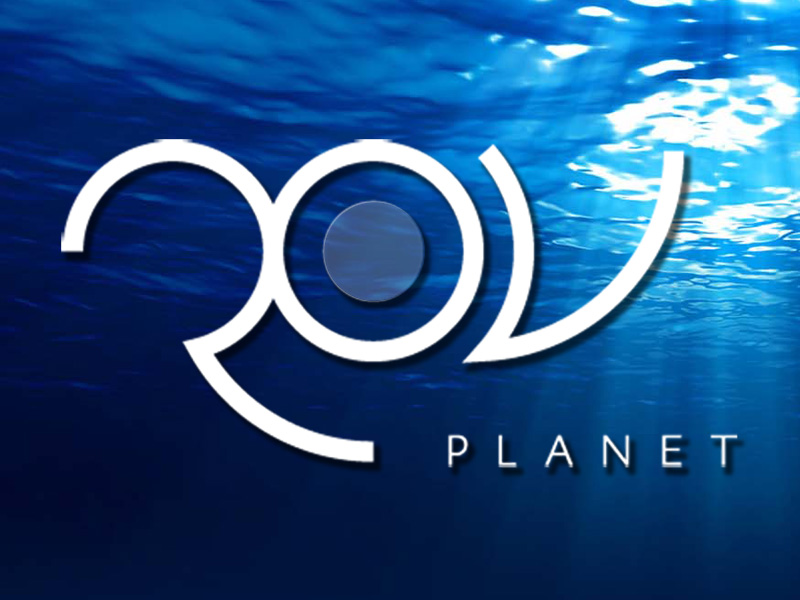
Ocean Robotics Planet Articles
Articles for Tag or Tags: Subastian
Number of matching Articles: 10
Scientists Discover Healthy Deep-Sea Coral Reefs and New Seamounts in the Galapagos
30.10.2023
Scientists examining underwater cliff ecosystems onboard research vessel Falkor (too) using the 4,500 meter robot, ROV SuBastian, have discovered two pristine coral reefs in the waters surrounding the Galápagos Islands.
These newly identified cold-water reefs are situated at depths ranging from 370 to 420 meters. The discovery expands our understanding of deep reefs within the Galápagos Islands Marine Reserve.
Scientists Discover New Hydrothermal Vents and Possible New Species in the Gulf of California
22.11.2021
A multidisciplinary team of scientists from Mexico and the U.S. discovered new hydrothermal vents and six possible new animal species during a 33-day expedition off the coast of La Paz on Schmidt Ocean Institute's research vessel Falkor. The underwater robot ROV SuBastian was used to explore and sample vents emitting fluids at temperatures up to 287°C (549°F) along with the unique animal communities inhabiting this extreme environment. ROV SuBastian additionally captured
stunning imagery of the seafloor including hydrothermal mirror pools, calcite spires, and iridescent blue scale worms.
Scientists Explore Seamounts in Phoenix Islands Archipelago, Gaining New Insights into Deep Water Diversity and Ecology
09.07.2021
Marine scientists aboard Schmidt Ocean Institute’s research vessel Falkor have identified likely new marine species and deep sea organisms on nine seamounts that were explored for the first time in the remote Phoenix Islands Archipelago. In a 34-day expedition that ended today, scientists also conducted high-resolution seafloor mapping of more than 30,000 square kilometers and video exploration of five additional seamounts.
First Comprehensive Study of NW Australia`s Deep Corals Completed
02.05.2021
Scientists circumnavigate and map the seafloor of the entire mesophotic (deep water) zone in Ashmore Reef Marine Park.
Scientists discovered a sea snake thought to be locally extinct and saw
several species such as the great spotted cowrie (Perissersoa guttata) for the first time in the Ashmore Reef Marine Park, off Australia, during Schmidt Ocean Institute's 18-day expedition that concluded this week.
First Completely Remote At-Sea Science Expedition in Australia`s Coral Sea Marine Park Discovers New Corals and Possible Speices Never Before seen
25.06.2020
Scientists working remotely with Schmidt Ocean Institute, one of the only at-sea science expeditions to continue operating during the global pandemic, have completed a first look at deep waters in the Coral Sea never before seen. The Australian science team discovered the deepest living hard corals in Eastern Australian waters, sighted fish in regions where they had never been found before, and identified up to 10 new marine species of fish, snails, and sponges.
New Species Discovered during Exploration of Abyssal Deep Sea Canyons off Ningaloo
14.04.2020
Unique fauna of the Cape Range and Cloates Canyons off of Ningaloo have been documented
at unexplored depths by researchers from the Western Australian Museum aboard Schmidt
Ocean Institute’s R/V Falkor. Seemingly the longest animal ever recorded, glass sponges, and
octopus squid are among species seen for the first time in Western Australia.
New Deep Sea Animal Discoveries Warrant Expanded Protections in Costa Rican Waters
09.02.2019
Scientists aboard Schmidt Ocean Institute’s research vessel Falkor surveyed deep-sea seamounts outside Isla del Coco UNESCO World Heritage site revealing coral communities with surprising diversity.
Deep-Sea Exploration Gives New Insight and Discoveries in Largest and Deepest UNESCO World Heritage Site
07.11.2017
Scientists return on Schmidt Ocean Institute’s research vessel Falkor after conducting underwater robotic dives in never before visited waters in the Phoenix Islands Protected Area (PIPA).
Seventeen underwater robotic dives have been made using ROV SuBastian, completing the first
expedition of the islands and eastern seamounts of the Phoenix Islands Protected Area (PIPA) in the nation of Kiribati. This follows an initial exploration of the western seamounts by the NOAA Ship Okeanos Explorer. “This journey was in the tradition of the grand research expeditions of the past,” said Chief Scientist Dr. Erik Cordes from Temple University. “We traveled nearly 3,000 miles across the Pacific Ocean and explored a part of the world that has remained entirely hidden from view until now.”
Unexplored Ocean Depths Bustling with Life, Despite Extreme Conditions
21.12.2016
Schmidt Ocean Institute’s new underwater vehicle SuBastian completes its first expedition discovering new hydrothermal vent sites and possible new species in the Mariana Back-Arc, an extreme deep-ocean environment.
APRA HARBOR, GUAM – A team of leading geologists, chemists, and biologists aboard research vessel Falkor have just finished surveying the largely unexplored Mariana Back-Arc for life at depths greater than 13,000 feet.
Dr. David Butterfield, JISAO, University of Washington, and Dr. William Chadwick, NOAA-PMEL and Oregon State University, led the group to the Back-Arc; returning for the second phase of a two-part exploration of the region.
In 2015, the team of scientists located new hydrothermal vents in the Back-Arc region, including evidence of recent lava flows. This year, the team returned to these vent systems with the new remotely operated vehicle (ROV), SuBastian, to characterize their water chemistry and biodiversity. The new results fill a gap in knowledge about the biogeography of these unique deep-sea ecosystems and has implications for how tectonic setting influences the composition of chemosynthetic animal communities worldwide.
One Step Closer to the Seafloor - New Underwater Robotic Vehicle Tested in Guam
26.08.2016
APRA HARBOR, GUAM – After a month of completing rigorous tests in the open ocean off the island of Guam in the western Pacific, the new Remotely Operated Vehicle (ROV) SuBastian is returning to shore. Schmidt Ocean Institute (SOI) has been working this summer, testing and integrating it’s new ROV from aboard its 272 foot oceanographic research vessel Falkor.

















